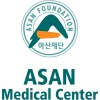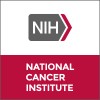
Donor-specific Allogeneic Hematopoietic Cell Transplantation for Acute Lymphoblastic Leukemia (ALL)...
Acute Lymphoid Leukemia[Study Objectives] To evaluate the efficacy of allogeneic hematopoietic cell transplantation (HCT) in patients with acute lymphoblastic leukemia (ALL) in the first or second complete remission (CR). The efficacy of the treatment will be measured in terms of the frequency of relapse and duration of remission (the primary endpoints). The secondary end points of the study include; engraftment, donor chimerism, secondary graft failure, acute and chronic graft-versus-host disease (GVHD), immune recovery, infections, transplantation-related mortality, leukemia free survival, and overall survival.

Pilot Trial of Targeted Immune-Depleting Chemotherapy and Reduced-Intensity Matched Unrelated Double...
LeukemiaNon-Hodgkins Lymphoma3 moreBackground: Allogeneic stem cell transplantation (SCT) has been used to treat many kinds of cancer or pre-cancerous conditions that develop in blood or immune system cells. Umbilical cord blood transplantation (UCBT) is a type of allogeneic transplant that is used when none of a patient s siblings are a match and an acceptable match cannot be identified from one of the bone marrow registries. Prior to receiving the cord blood stem cells, large doses of chemotherapy drugs and/or radiation have been traditionally used to eliminate most of the cancerous or abnormal cells from the recipient s system, along with most of his or her own stem cells and immune cells. Donor stem cells then replace the recipient s stem cells in the bone marrow, restoring normal blood production and immunity. In this way, an allogeneic SCT provides not only new blood cells but an entire new immune system. In the past, allogeneic SCT was performed with very high doses of chemotherapy and/or radiation to get rid of as much of the recipient s cancer as possible and prevent rejection of the treatment. However, intensive chemotherapy or radiation can cause serious side effects, including death. A newer method uses smaller, less toxic doses of chemotherapy and/or radiation before allogeneic SCT. In these reduced-intensity stem cell transplants, the recipient s stem cells and immunity are not completely eliminated, but they are weakened enough to help prevent the donor s cells from being rejected. Objectives: - To study the safety and effectiveness of reduced-intensity stem cell transplants given with immune-depleting chemotherapy and umbilical cord blood provided by an unrelated donor. Eligibility: Individuals between 18 and 69 years of age who have been diagnosed with any of a number of cancerous and pre-cancerous blood conditions, including lymphoma and leukemia. Participants must not have a potential donor sibling or a readily available unrelated donor identified through one of the bone marrow donor registries. Design: Patients will be matched with at least two umbilical cords with an acceptable cell dose. The two frozen umbilical cord blood units will be sent to the NIH prior to the date of transplant. Patients will receive one, two, or three cycles of chemotherapy (based on the type of disease) to treat the disease and to weaken the immune system. Patients who already have a weakened immune system from other treatments will not receive this round of chemotherapy. Patients will then receive 4 days of reduced-intensity transplant chemotherapy (also called the conditioning regimen ) to prepare for the transplant. Two days after transplant chemotherapy, patients will receive the transplant, with the two umbilical cords infused one after the other on the same day. Patients will receive additional treatment to prevent complications. Patients will remain in the hospital for 4 to 6 weeks after the transplant, and will be discharged for outpatient treatment when the study doctors deem it appropriate. Patients will continue on medications at home to lower the risk of complications and infections, and will visit the NIH clinic regularly for the first 6 months after the transplant, and then less often for at least 5 years afterward.

A Study of Dasatinib and Rituximab for Relapsed/Refractory Chronic Lymphocytic Leukemia
Chronic Lymphocytic LeukemiaThis is an open-label phase I/II study that will investigate the combination of dasatinib and rituximab therapy in patients with relapsed/refractory CLL. In phase I, eligible subjects will take either 100 mg or 140 mg of dasatinib daily along with rituximab on day 1 of each cycle for 6 cycles. In phase II, eligible subjects will all receive the same dose of dasatinib, as established in the phase I portion, along with rituximab on day 1 of each cycle for 6 cycles. The investigators hypothesize that the combination of dasatinib and rituximab will demonstrate efficacy in the treatment of patients with relapsed/refractory CLL.

Study of IMC-EB10 in Participant With Leukemia
Myeloid LeukemiaThe purpose of this study is to determine if IMC-EB10 is safe for participants with leukemia, and also to determine the best dose of IMC-EB10 to give to participants.

Pegaspargase and Combination Chemotherapy in Treating Patients With Newly Diagnosed Acute Lymphoblastic...
LeukemiaRATIONALE: Drugs used in chemotherapy work in different ways to stop the growth of cancer cells, either by killing the cells or by stopping them from dividing. Giving more than one drug (combination chemotherapy) may kill more cancer cells. PURPOSE: This phase II trial is studying the side effects of giving pegaspargase together with combination chemotherapy and to see how well it works in treating patients with newly diagnosed acute lymphoblastic leukemia.

Rituximab and Alemtuzumab in Treating Older Patients With Progressive Chronic Lymphocytic Leukemia...
Chronic Lymphocytic LeukemiaRATIONALE: Monoclonal antibodies, such as rituximab and alemtuzumab, can block cancer growth in different ways. Some block the ability of cancer cells to grow and spread. Others find cancer cells and help kill them or carry cancer killing substances to them. Giving rituximab together with alemtuzumab may kill more cancer cells. PURPOSE: This randomized phase II trial is studying two different doses of rituximab to compare how well they work when given together with alemtuzumab in treating older patients with progressive chronic lymphocytic leukemia.

Phase II Study of TPA Plus Dexamethasone & CMT in Hematologic Malignancies
LeukemiaThis phase II trial is studying the side effects and how well giving tetradecanoylphorbol acetate together with dexamethasone and choline magnesium trisalicylate works in treating patients with relapsed or refractory acute myeloid leukemia.

Yttrium Y 90 Anti-CD45 Monoclonal Antibody AHN-12 in Treating Patients With Advanced Leukemia
LeukemiaMyelodysplastic SyndromesRATIONALE: Monoclonal antibodies can block cancer growth in different ways. Some block the ability of cancer cells to grow and spread. Radioactive monoclonal antibodies, such as yttrium Y 90 monoclonal antibody, can find cancer cells and either kill them or carry cancer-killing substances to them without harming normal cells. PURPOSE: This phase I trial is studying the side effects and best dose of a yttrium Y 90 monoclonal antibody and how much radiation is taken in by the organs in the body in treating patients with advanced leukemia or other hematologic disorder.

Alemtuzumab, Busulfan, and Cyclophosphamide Followed By a Donor Stem Cell Transplant in Treating...
Graft Versus Host DiseaseLeukemia2 moreRATIONALE: Monoclonal antibodies, such as alemtuzumab, can find cancer cells and either kill them or deliver cancer-killing substances to them without harming normal cells. Giving chemotherapy drugs, such as busulfan and cyclophosphamide, before a donor stem cell transplant helps stop the growth of cancer cells. When the healthy stem cells from a donor are infused into the patient they may help the patient's bone marrow make stem cells, red blood cells, white blood cells, and platelets. Sometimes the transplanted cells from a donor can make an immune response against the body's normal cells. Giving tacrolimus and methotrexate after the transplant may stop this from happening. PURPOSE: This phase I/II trial is studying the best dose of alemtuzumab when given together with busulfan and cyclophosphamide followed by a donor stem cell transplant and to see how well it works in treating patients with hematologic cancer.

Tretinoin and Arsenic Trioxide With or Without Idarubicin in Treating Patients With Acute Promyelocytic...
LeukemiaRATIONALE: Tretinoin may help cancer cells become more like normal cells, and to grow and spread more slowly. Drugs used in chemotherapy, such as arsenic trioxide and idarubicin, work in different ways to stop the growth of cancer cells, either by killing the cells or by stopping them from dividing. Giving tretinoin together with arsenic trioxide with or without idarubicin may kill more cancer cells. PURPOSE: This phase II trial is studying how well giving tretinoin together with arsenic trioxide with or without idarubicin works in treating patients with acute promyelocytic leukemia.
